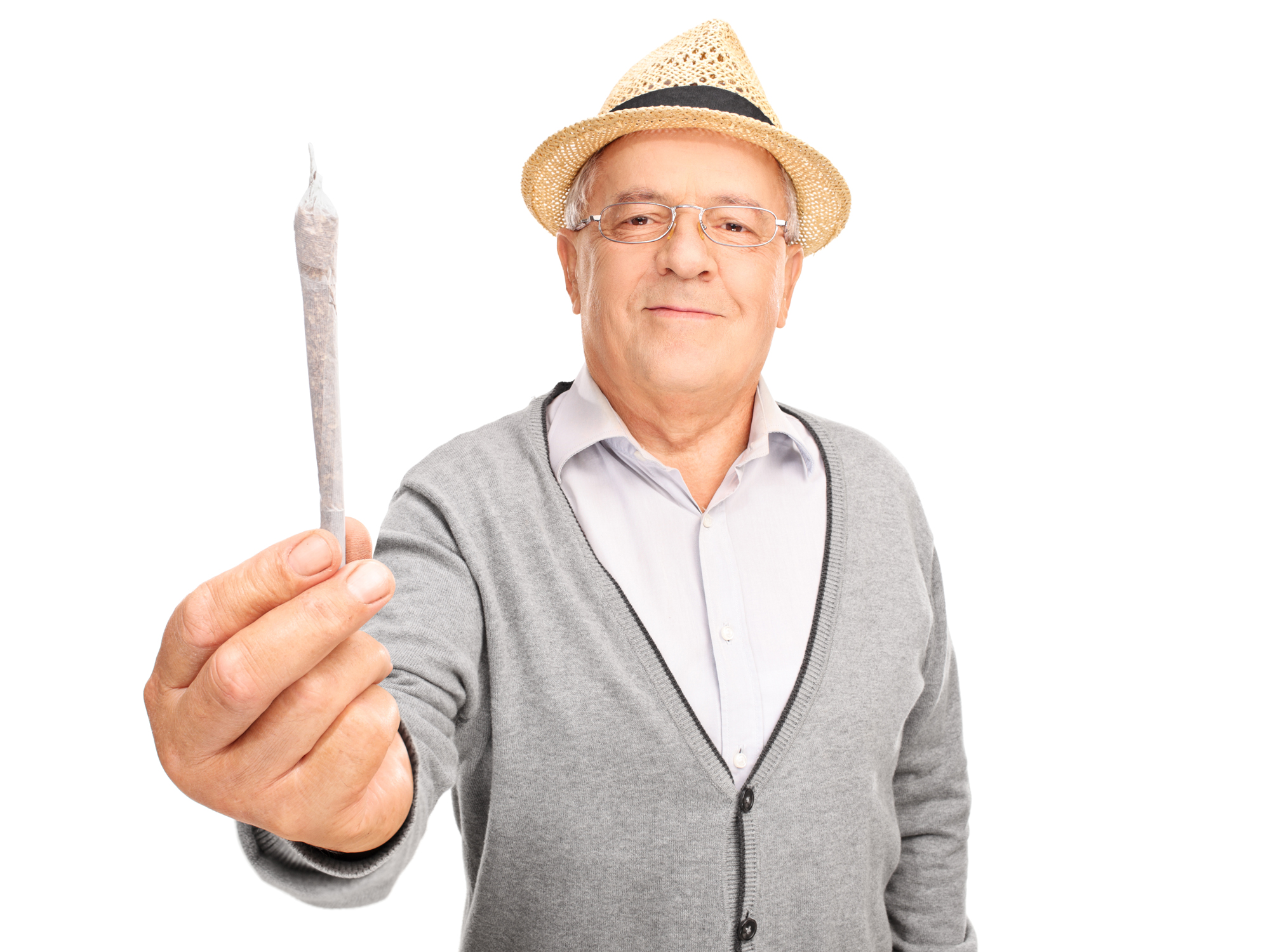Get Easy Health Digest™ in your inbox and don’t miss a thing when you subscribe today. Plus, get the free bonus report, Mother Nature’s Tips, Tricks and Remedies for Cholesterol, Blood Pressure & Blood Sugar as my way of saying welcome to the community!
3 Upsides and downsides of medical marijuana from seniors who tried it

Ever since hippies brought marijuana into the mainstream in the 1960s, it’s been closely tied to youth culture — you know, teenagers sneaking off after school to smoke a joint or young bohemians toking up at a concert, that kind of thing.
But now that marijuana’s gaining legitimacy as a form of medicine, there’s another group that’s using marijuana more than ever before — seniors.
The number of seniors using marijuana grew by 250 percent between 2006 and 2013. And seniors are by far the fastest growing age group using marijuana.
When you think about it, the fact that seniors are turning to marijuana more and more makes perfect sense. Besides the fact that many of today’s seniors are the hippies that popularized marijuana to begin with, they’re also the group that needs medical marijuana the most. They’re the most likely to have health issues and be in chronic pain.
Maybe you’re a senior considering medical marijuana yourself. Maybe you’ve even used it before years ago. But can marijuana actually help you feel better now?
Well, there’s no better way to find out than to ask seniors who’ve tried it. And that’s exactly what researchers from Northwell Health in Great Neck, N.Y did in a recent study.
3 Benefits of medical marijuana for seniors
This study asked 150 seniors who’d tried medical marijuana for pain to take a 20-question survey. On average, these seniors were between 61 and 70 years old. And their reaction was overwhelmingly positive. They reported:
1. Less pain
Most seniors with chronic pain saw a dramatic decrease in their pain after using medical marijuana for a month. On a pain scale of 1 to 10, they said that their pain started at a 9 and went down to a 5.6 after using medical marijuana. And an impressive 91 percent of seniors said they’d recommend medical marijuana to others. That’s a pretty glowing endorsement, right?
The best part was that marijuana reduced these seniors’ pain enough to improve their quality of life significantly…
“It [medical marijuana] is extremely effective and has allowed me to function in my work and life again. It has not completely taken away the pain, but allows me to manage it,” said a senior who participated in the study.
2. Less opioid use
Seniors who used medical marijuana to treat their chronic pain used less opioids. Since there’s never been a reported death from medical marijuana and there are 19,000 reported deaths from prescription opioids every year, this is a big benefit. And these seniors realized that.
“I was on Percocet and replaced it with medical marijuana. Thank you, thank you, thank you,” said one senior involved in the study.
3. Less reliance on other drugs
Not only were these seniors able to cut back on opioids, but marijuana helped them cut back on other prescription drugs too. Since marijuana is safer and has less side effects than many popular prescription drugs, this is a huge step in the right direction for seniors. That said, there are some downsides to medical marijuana….
3 Disadvantages of medical marijuana for seniors
1. Cost
According to seniors involved in the study, one of the biggest downsides of replacing prescription meds with medical marijuana is cost. Medical marijuana isn’t covered by insurance, because it’s still illegal at the federal level. That means all medical marijuana expenses are paid out-of-pocket.
2. Sleepiness
It’s no secret that marijuana makes you sleepy. This could be a good thing if your chronic pain is also accompanied by chronic insomnia. But if you’re using medical marijuana during the day, it may make you sleepier than you’d like.
3. Dosing
Medical marijuana requires precise dosing to get the desired effect. Researchers say that if you take too little or too much it won’t help your pain. That’s why it’s helpful to work with a medical professional who can guide you. Researchers recommend starting with a low dose and increasing the dose slowly until you get the desired effect.
Do you qualify?
Hopefully, these insider insights were helpful if you’re considering medical marijuana for your pain or other health issues.
The first step for anyone considering medical marijuana is to see whether you qualify for medical marijuana in your state. Here’s a full list of qualifying conditions by state, so you can check.
Editor’s note: Discover how to live a cancer prevention lifestyle — using foods, vitamins, minerals and herbs — as well as little-known therapies allowed in other countries but denied to you by American mainstream medicine. Click here to discover Surviving Cancer! A Comprehensive Guide to Understanding the Causes, Treatments and Big Business Behind Medicine’s Most Frightening Diagnosis!
Sources:
- Demographic trends among older cannabis users in the United States, 2006–13 — Addiction
- How Seniors Joined the Cannabis Craze — The New Yorker
- Medical marijuana a hit with seniors — MedicalXpress













